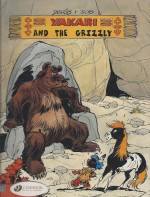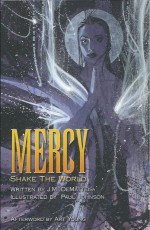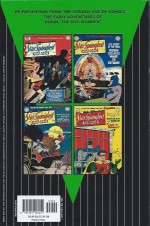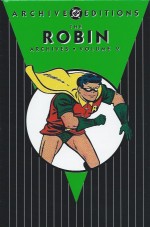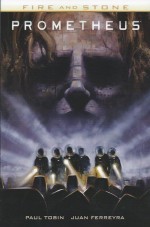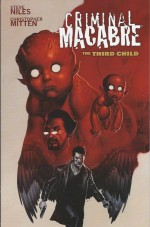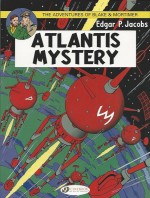
By Edgar P. Jacobs, translated by Jerome Saincantin (Cinebook)
ISBN: 978-1-84918-107-5
Master storyteller Edgar P. Jacobs pitted his distinguished duo of Scientific Adventurers Professor Philip Mortimer and Captain Francis Blake against a wide variety of perils and menaces in stunning action thrillers which merged science fiction, detective mysteries and supernatural thrillers in the same timeless Ligne claire style which had done so much to make intrepid boy reporter Tintin a global sensation.
The strip debuted in Le Journal de Tintin #1 (26th September 1946): an international anthology comic with editions in Belgium, France and Holland. The magazine was edited by Hergé, with his eponymous star ably supplemented by a host of new heroes and features for the modern age…
L’enigme de l’Atlantide was the fourth electrifying exploit of the peerless pair, originally serialised from March 30th 1955 to May 30th 1956, and subsequently collected in a single chronicle as the seventh drama-drenched adventure album the following year.
The stunning secret history saga became the 12th translated Cinebook release, and opens here with vacationing Intelligence operative Blake arriving in the Azores on idyllic island Sao Miguel where Mortimer is engaged in exploring deep caves in his ceaseless search for new knowledge.
From the moment he lands the British Agent is under constant scrutiny by mysterious gangsters and no sooner does he join his old comrade than petty acts of vandalism and outright sabotage begin to occur…
Unbeknownst to the pair, whilst they are distracted, a mysterious intruder searches the Professor’s palatial lodgings only to be blasted by an even more fantastic figure with a ray-gun.
The delayed detectives only arrive in time to observe an astounding escape before the bellicose boffin explains how he has apparently discovered a new mineral of incredible potential in the vast cave system far below the surface of the island. He suggests it might be the wonder metal Plato describes as “Orichalcumâ€; the most prized element of the fabled Atlanteans…
Undeterred by the break-in, the bold Brits lay plans to further evaluate Mortimer’s mammoth cavern and before long a small but dedicated team are scrambling through perilous crevices to terrifying depths in search of more of the mystery.
The “mad English†are no longer the main topic of conversation on the island however: everybody else is glued to newspaper reports of flying saucer sightings…
Glad of their return to obscurity and utterly unaware that one of their team has been replaced by a deadly old enemy, the valiant subterranean explorers struggle on against formidable and oppressive odds underground, but when the Professor’s Geiger Counter begins to react wildly and they recover a huge chunk of the mystery mineral, the saboteur makes his move.
As a sudden storm threatens to wash the entire expedition away, the infiltrator incepts warnings from the surface, swipes the samples and, cutting the rope ladders, abandons Blake and Mortimer to their deaths…
His big mistake is pausing to gloat: a well-aimed rock hurled by the Secret Serviceman seemingly seals the scoundrel’s fate too…
Unable to go back, the plucky duo then decide to chance everything on following a subterranean river under the island in the vanishingly small hope of finding an exit. Instead, after an astounding under-earth odyssey, what they discover is mercilessly marauding pterodactyls and a fantastically advanced civilisation of super-scientists…
Soon the pair are recuperating in the vast bastion of Poseidopolis – thriving last outpost of legendary Atlantis – befriended by young noble Prince Icarus. He happily shares the epic true history of Ancient Earth and his still space-faring nation with them, secure in the knowledge that they will never leave the subterranean metropolis for as long as they live…
Unfortunately, with their customary impeccable timing, the British bravos have arrived just as the city’s most trusted civil servant Magon is about to usurp the hereditary rulers’ millennia of unchallenged power. All too soon they become embroiled in a shattering civil war at the earth’s core.
Not only is the entire kingdom of noble Lord Basileus at stake, but the schemer and his allies also have designs upon the Atlanteans’ outer space dominions and the hapless, ignorant surface nations in between…
Packed with astounding action, double-doses of dastardly duplicity and captivatingly depicting the cataclysmic end of a fabulous secret civilisation, this is one of the Distinguished Duo’s most glorious exploits and one no lover of lost world yarns should miss.
Addictive and fantastic in the truest tradition of pulp sci-fi and Boy’s Own Adventures, Blake and Mortimer are the very epitome of dogged heroic determination; the natural successors to such heroic icons as Professor Challenger, Bulldog Drummond and Richard Hannay, always delivering grand, old-fashioned Blood-&-Thunder thrills and spills in timeless fashion and with mesmerising visual punch.
Any kid able to suspend modern mores and cultural disbelief (call it alternate earth history or bakelite-punk if you want) will experience the adventure of their lives… This Cinebook edition also includes excerpts from two forthcoming albums plus a short biographical feature and chronological publication chart of Jacobs’ and his successors’ efforts.
Original edition © Editions Blake & Mortimer/Studio Jacobs (Dargaud-Lombard S. A.) 1988 by E.P. Jacobs. All rights reserved. English translation © 2011 Cinebook Ltd.





